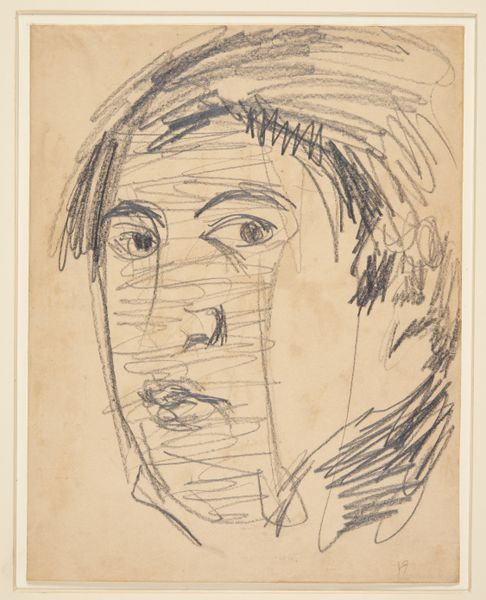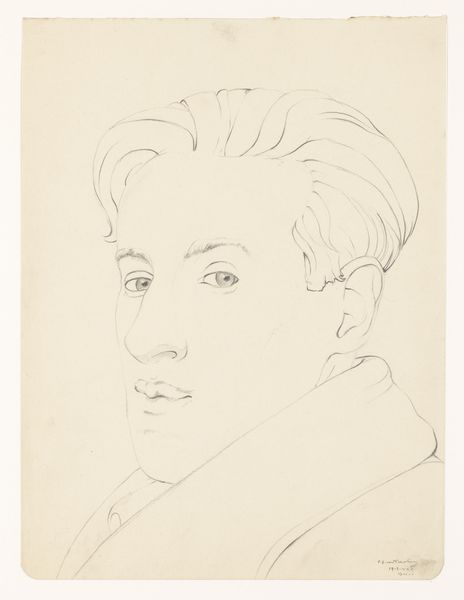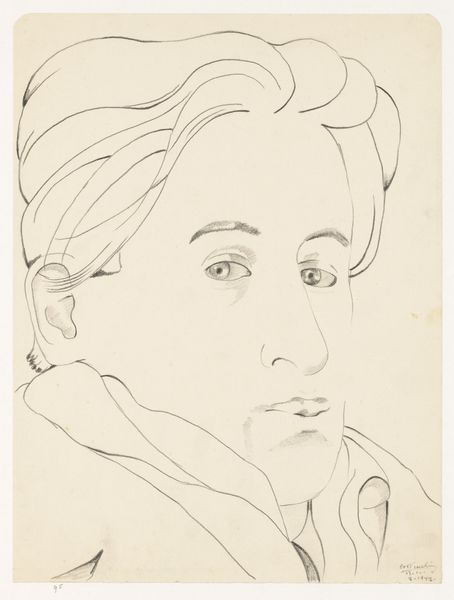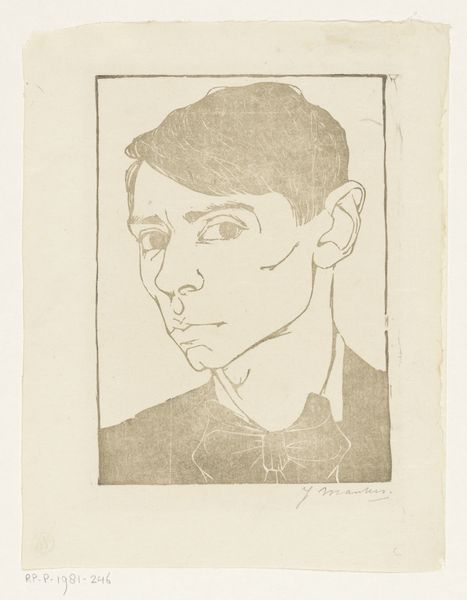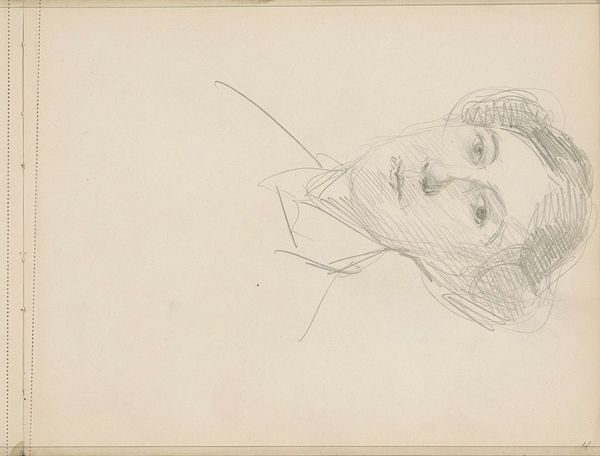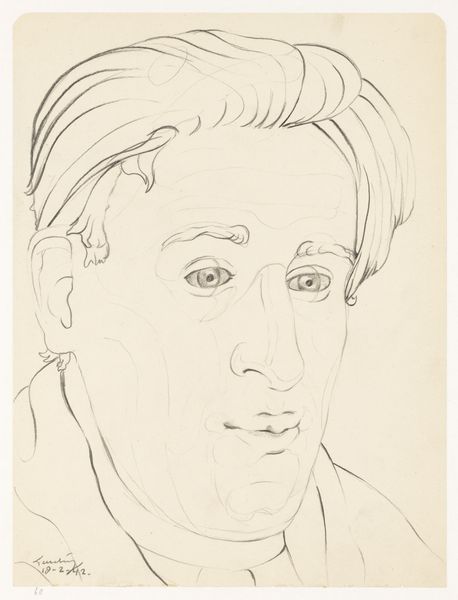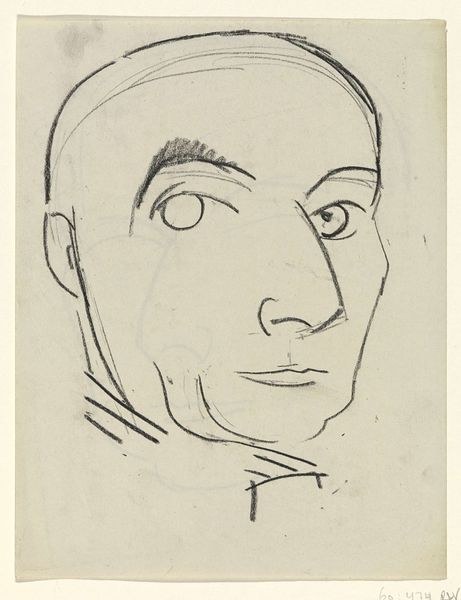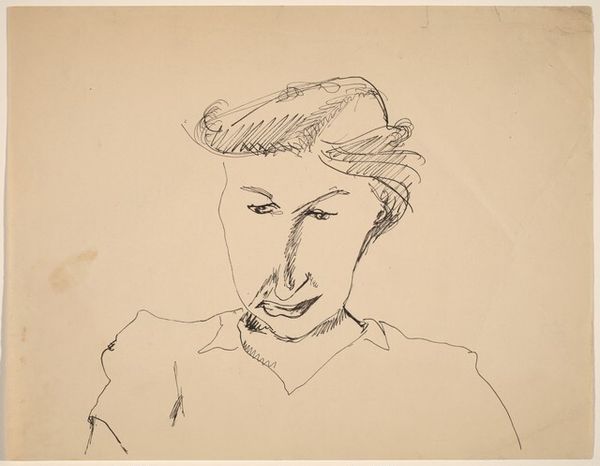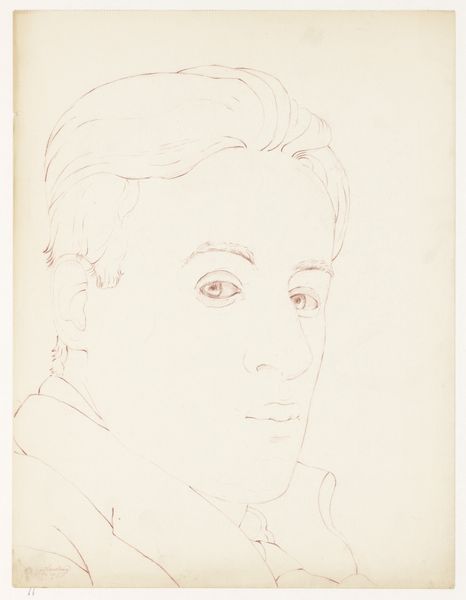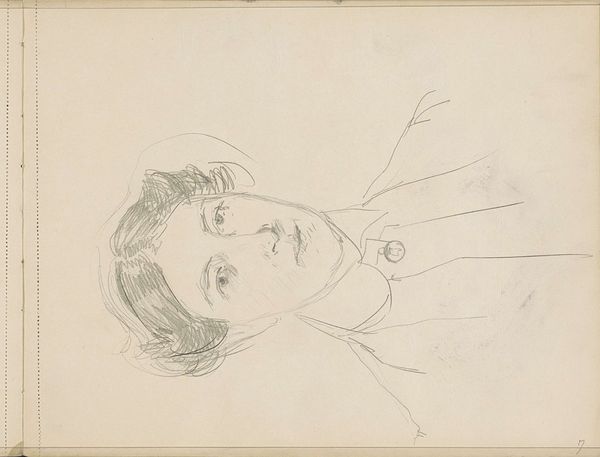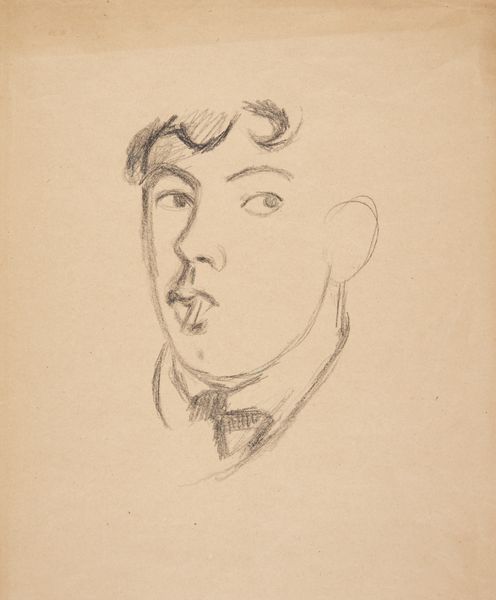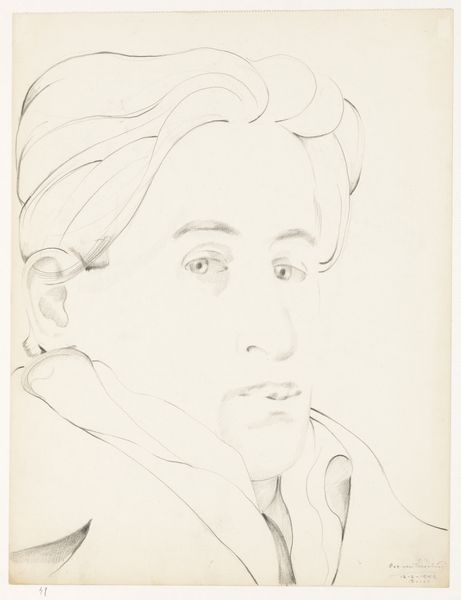
Copyright: National Gallery of Art: CC0 1.0
Curator: This drawing by Henri Matisse from 1926 captures the pianist Alfred Cortot. What's your initial read? Editor: It has such an arresting simplicity! Spare lines define the face, and the gaze is so direct, almost unsettling. There's a real sense of interiority being conveyed, but who holds the power in this encounter? Curator: I agree about that simplicity; it's deceptive. It looks effortless, as though he captured Cortot in a fleeting moment, but there’s careful editing at play—each line doing so much work to evoke form and shadow. Matisse truly mastered the reduction of form, here and elsewhere! Editor: Absolutely. Consider how Cortot was positioned socially. As a celebrated pianist and conductor in post-WWI Europe, what tensions do you see emerging from Matisse's seemingly simple representation? Are we seeing Cortot or who Matisse wanted us to see? Curator: Well, I think that in stripping things back, Matisse goes beyond just depicting Cortot's likeness; he seeks his essence. The direct gaze, as you mentioned, hints at Cortot’s intensity, his focused dedication to music. He becomes more than just a famous musician. Though I find the rendering sympathetic and even tender, maybe I'm just projecting. Editor: It's definitely interesting to think about the artist's intentions versus what actually materializes. Who has the power to inscribe identity onto another? Looking at it that way, I wonder what politics are present but obscured. Curator: True, that dynamic always lingers in portraiture. And here, the raw medium—just pencil on paper—creates a closeness, an immediacy that transcends the social distance. It feels almost like a conversation captured on paper. You know, thinking about "conversation," it reminds me of Matisse’s famous quote, "I don't paint things, I only paint the difference between things." Perhaps, here, he’s capturing the subtle contrast between Cortot’s public persona and his inner self. Editor: I like that interpretation. I wonder if later feminist theorists like Laura Mulvey would consider this a fine example of the male gaze and the tension of the artist inscribing their narrative onto their male subject. Curator: An important question, to be sure. Well, whatever the precise answer, it’s clear this deceptively simple portrait offers layers to unpack. Editor: Agreed. It’s a reminder that art is never truly neutral; it is a process of negotiation.
Comments
No comments
Be the first to comment and join the conversation on the ultimate creative platform.

